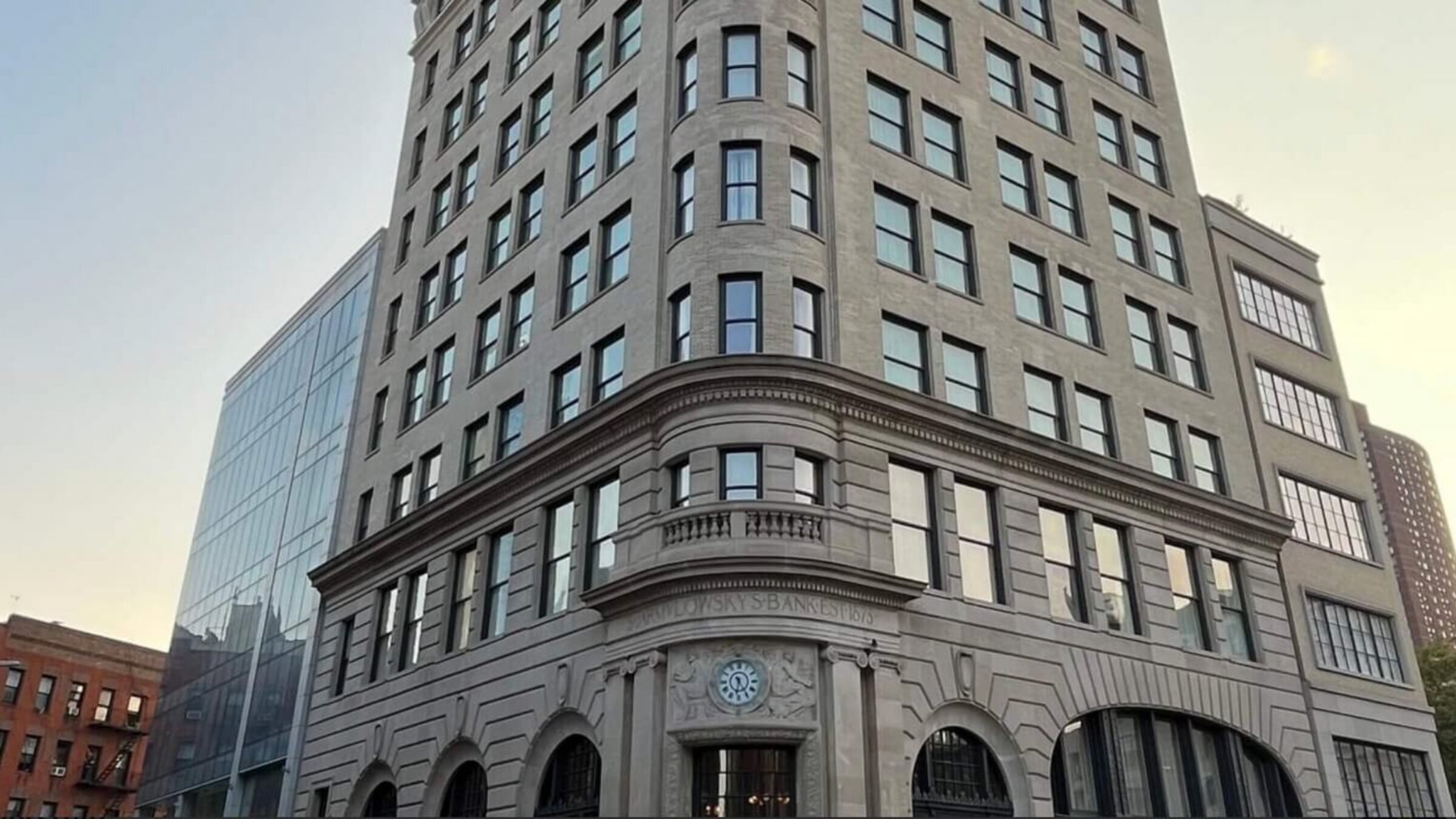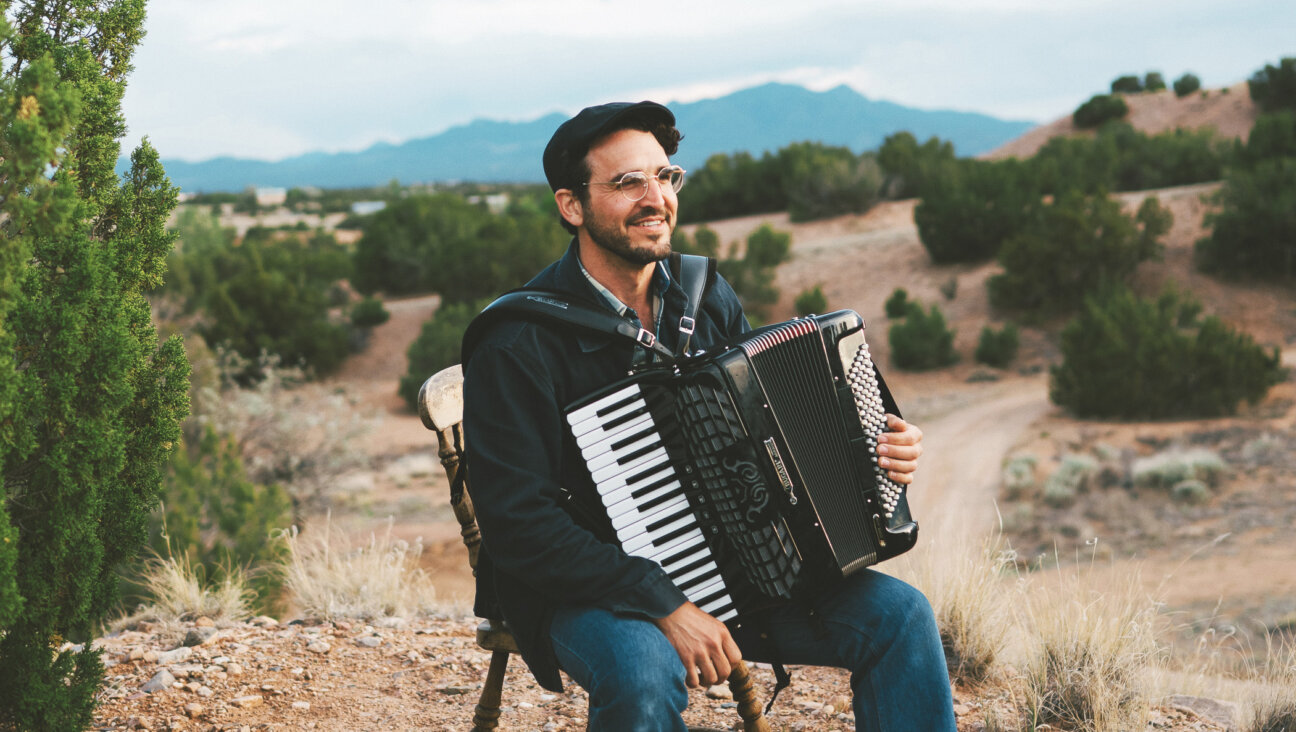How my family built a bank for the Lower East Side — and then destroyed it
Growing up, I had no clue about my family’s role in the 1917 collapse of the Jarmulowsky Bank

Photo by Andrew Silverstein
In my first years in New York in the 1990s, I would wander through the Lower East Side, past the bodegas, the Dominican restaurants, the faded signs on the sides of buildings recalling the Jewish past. I had no clue that I had any familial connection to the landscape. Growing up celebrating Christmas in Virginia, I was barely conscious of being Jewish. But as I approached 30, I discovered that my great-great-grandfather, a rabbi, had played a crucial role in building the Jewish Lower East Side. Unfortunately, his son — my great-grandfather — helped lead it to financial devastation.
When I moved to New York, my wife-to-be, Angela, and I would visit my great aunt Dorle Jarmel Soria, a former music publicist, in her expansive midtown apartment. Dorle, cogent despite her advanced age, told us tales of Maria Callas, Leonard Bernstein, and other friends from her past. She spoke often of her beloved mother, named Grand, but rarely of her father, a shadowy figure named Louis. I learned nothing of earlier generations, as if the family had spontaneously generated with Dorle’s birth in 1900.
But one afternoon in 1994, while walking down Canal Street, Angela chanced across the insignia S. Jarmulowsky’s Bank emblazoned upon a grand neo-classical former bank building. The AIA Guide to New York revealed the initial S. to be the Yiddish name Sender. Angela and I wondered if this Sender Jarmulowsky might somehow be connected to the Jarmels in our family.
The next time I visited Dorle for cocktails, I brazenly brought up the family story that she and her sister had kept from later generations. Yes, she revealed to me, Sender Jarmulowsky had been her grandfather. Eager to find out more, I read Irving Howe’s classic book about New York Jewish life, World of Our Fathers, and historian Rebecca Kobrin’s scholarly work on my family in American Jewish History. This helped me uncover the shocking story of my great-great-grandfather and his family.
Sender was born to an impoverished family in the shtetl of Grajewo (“Grayve,” in Yiddish), Poland, in 1840, then orphaned in a cholera epidemic. After being adopted by a rabbi, he became a rabbi himself, and then married into wealth. Both a Talmudic scholar and a nascent businessman, Sender moved to Hamburg with his wife, Rebecca Markels, and started brokering the steerage class boat tickets to New York so essential to the growth of the Lower East Side, which would become the largest community of Jews in the world.
Sender would buy cheaper passages during winter with fake passenger names, then sell them at higher prices in the summer because, luckily for him, the shipping lines were willing to change the names on the tickets. Sender and his family emigrated to New York in 1873. Using the money he had earned brokering ship tickets in Hamburg, he built the bank on Canal Street for the same population that bought ship passages. According to Kobrin, this was nearly half the Lower East Side.
One day, during a visit to the historic Eldridge Street Synagogue, a few blocks away from the bank, Angela discovered a plaque dedicated to Sender Jarmulowsky and learned that he had been one of several prominent Jews who had contributed to its founding.
But after Sender’s death, Kobrin wrote, his sons Louis and Meyer irreparably damaged the very community that their father had helped build. They used account holder money to buy buildings in Harlem where they were involved in dubious redistricting, and when account holders began taking money out at the onset of World War I, the bank defaulted. On Aug. 3, 1914, the bank was closed down, destroying the lives and livelihoods of the immigrants that Sender had brought over from Europe.
Dorle and her family escaped an angry mob outside their building by climbing up the fire escape, and eventually changed their names and the arc of their lives. This dark chapter of American Jewish history was almost ignored for generations, perhaps due to what historian Tony Michels has called “Jewish Triumphalism,” a tendency to focus on positive stories. And I, too, have not always been comfortable speaking of the corrupt Jewish bankers in my lineage.
A pariah in her community but liberated from traditional orthodox female expectations, Dorle embarked on a thrilling series of escapades and accomplishments. Her five simultaneous love affairs in the 1930s are recounted in my memoir Master Lovers.
In the years following the collapse of the bank, the Lower East Side Jews began moving out to Brooklyn, New Jersey and Long Island. As the neighborhood changed, the Jarmulowsky Bank appeared abandoned, the Eldridge Street Synagogue fell into disrepair, and Spanish became more common than Yiddish on the streets.
The Latino community that sprung up after the Lower East Side’s Jews moved to the suburbs in the 1960s has been largely displaced by the gentrification sweeping across lower New York since the 1990s.
The apex of that gentrification is the swanky hotel and cocktail bar, Nine Orchard, which now occupies the building of the former Jarmulowsky Bank. Out of curiosity, I once visited the hotel and got quite a surprise. The troubled history of the bank now appears on placards and brochures throughout the building.
Although my great-aunt Dorle had kept those details hidden from our family for years, I’m glad to see that the story of the bank, including the tumultuous story of Sender Jarmulowky and his sons, is now seen as an integral part of the Lower East Side’s fascinating history.
















